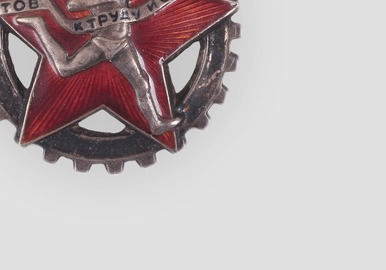The hall dedicated to the office of the commander of the Karelian Front, contains one of the most common and recognizable room accessories of that time — a mechanical wall clock. Mechanical watches have pendulums which are set in motion by a weight on a cord or chain, spring drive or electricity.
In Europe, the first mechanical clocks appeared in the 13th century — they were installed on towers in rich cities and large monasteries. The first clock had no dial and hit the bell at certain intervals. Over time, mechanical watches decreased in size, room and pocket versions were invented, minute hands and, in the 18th century, second hands appeared. A wall clock with a pendulum or weights became commonplace for both city apartments and rich peasant houses at the end of the 19th century. These watches had to be wound up once in a while by turning the key to tense the spring or by pulling the weight up.
In the USSR, one of the main watch manufacturers was the 2nd Moscow Watch Factory, which was established in 1924 as a result of the merger of the Moscow Radiotelegraph Plant with electromechanical and watch workshops.
In 1929, in the wake of industrialization, Amtorg, the Soviet trade representative, acquired two bankrupt watch factories in America — Dueber-Hampden from Canton (Ohio) for the production of pocket and wristwatches; and Ansonia from Brooklyn (New York) for the production of alarm clocks and wall clocks. These two enterprises became the basis for the 1st and 2nd state watch factories of the Gostrest Tochmech (State Trust of Precision Mechanics) in Moscow. In 1930–1931, they began producing the first Soviet watches. Mass production of pendulum clocks, alarm clocks, street electric clocks, wall, pocket, automobile and chess clocks was set up in these factories.
During the Great Patriotic War, the watch industry was placed on war footing and manufactured defense products, including mortars and artillery equipment but in 1944, the production of household watches was continued.
There is an inscription on the dial of the wall clock in the Karelian Front Museum, which contains information of the manufacturer and the time of production — the 2nd Watch Factory, 1939–1941.

